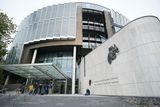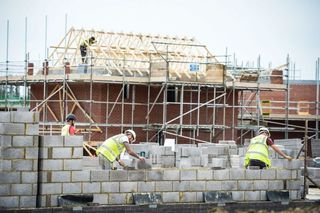One in five primary children crammed into 'overcrowded' classes of more than 30 pupils
Stark figures despite rise in new teachers
Stock photo
Almost one in five students in primary school last year was in classes of 30 or more, with six schools recorded as having classrooms with 40 or more pupils.
Despite large numbers of new teachers being recruited in recent years, many schools continue to experience difficulty in keeping class sizes at recommended levels.
The stark figures emerged from an analysis of data published by the Department of Education on more than 22,700 mainstream classes in more than 3,100 primary schools across the country.
It shows that 19.8pc of all pupils are in classes which could be considered overcrowded. Forty-five per cent of all primary schools had at least one classroom of 30 pupils or more last year.
The record class size in primary education was 42 pupils, which was recorded in three schools - Scoil Náisiúta Róis, Taylor's Hill, Galway; Scoil Naomh Colmchille, Carndonagh, Co Donegal; and Bunscoil Phádraig Naofa, Tuam, Co Galway.
The school with the highest average class size in the country was Scoil Mobhi in Glasnevin, Dublin, which last year had an average of 31.9 pupils in each of its eight classrooms.
The figures show the number of students in classes of 25 or more across the country is more than 347,500 - approximately 63pc of the total.
Pupils in schools across Leinster and Waterford are more likely to be in classes of 25 or more.
However, the figures also highlight how average class sizes nationally have been falling continuously since 2015/16 when they stood at 25.4 pupils per class.
They decreased further in the last academic year to 24.3 - down from 24.5 in 2017/18 - but are still relatively high by international standards. Class sizes reached their lowest level in 2008 at an average of 23.8 pupils.
The average class size decreased by at least one pupil per teacher in 925 schools last year, but increased by at least one pupil per teacher in 753 schools.
According to the Organisation for Economic Co-operation and Development, the average class size in most developed countries is 21.
There is no statutory limit on the size of general classes, although a Department of Education circular in 1990 stated that "appropriate learning experience is difficult to achieve when classes consisting entirely of mainly four-year-old children exceed 25".
Education Minister Joe McHugh said Budget 2019 would allow for the numbers employed in schools to reach their highest ever level.
He said it was the third year of major investment in education, with the department's budget increasing by 6.7pc, or €674m, on 2018.
"Over 1,300 additional posts will be funded including more than 370 teaching posts to cater for growth in student population and additional special classes," said Mr McHugh.
The Department of Education said the staffing schedule for the previous school year at primary level was a general average of 26 pupils for every teacher.
"The staffing schedule operates in a clear and transparent manner and treats all similar types of schools equally, irrespective of location," said a spokesperson.
He added that the guidance issued to schools was to keep the number of pupils in any class "as low as possible".
It is estimated that lowering the primary staffing level by one student per teacher would cost €135m a year.
While welcoming a reduction in class sizes in recent years, the Irish National Teachers' Organisation (INTO) said it remained "far too high" and called for the trend to be maintained until levels reach the EU average class size of 20.
"Smaller classes support inclusion and diversity of children and allow for more individual attention," said an INTO spokesman.
The INTO said falling numbers due to attend primary schools over coming years presented "an ideal opportunity" to further lower class sizes if we retain the number of teachers at the present level".
Join the Irish Independent WhatsApp channel
Stay up to date with all the latest news














